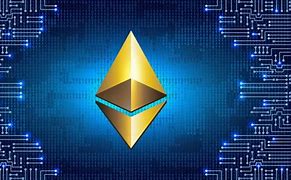Exploring Ethereum Virtual Machine: The Heart of Ethereum Blockchain
Ethereum Virtual Machine (EVM) is the backbone of the Ethereum blockchain network, enabling developers to create and execute smart contracts. In this article, we will delve into the Ethereum Virtual Machine, its architecture, and the role it plays in the Ethereum ecosystem.

Introduction to Ethereum Virtual Machine
The Ethereum Virtual Machine (EVM) is a software environment that executes smart contracts in a decentralized and distributed manner. It is a virtual machine that runs on every node in the Ethereum network, making it a truly decentralized platform. The EVM is responsible for executing the code that defines smart contracts and handles transactions on the Ethereum network.
Architecture of Ethereum Virtual Machine
The Ethereum Virtual Machine is designed with a stack-based architecture, which means that it uses a stack to store and execute instructions. The stack-based architecture is similar to the architecture used in most modern computers, making it easy to understand and program. The EVM has a set of operations that can be used to manipulate data on the stack and execute instructions.
Role of Ethereum Virtual Machine in Ethereum Ecosystem
The Ethereum Virtual Machine plays a crucial role in the Ethereum ecosystem by enabling developers to create and execute smart contracts. Smart contracts are self-executing contracts that are coded on the Ethereum blockchain, making them transparent, immutable, and tamper-proof. The EVM enables developers to create smart contracts using Solidity, a high-level programming language that is specifically designed for creating smart contracts.

Advantages of Ethereum Virtual Machine
The Ethereum Virtual Machine has several advantages, including:
1. Decentralization: The EVM is a truly decentralized platform that runs on every node in the Ethereum network, making it immune to censorship and control.
2. Security: Smart contracts executed on the EVM are secure and tamper-proof, as they are stored on the Ethereum blockchain and executed in a decentralized manner.
3. Transparency: The EVM enables developers to create transparent smart contracts that can be audited and verified by anyone on the Ethereum network.
4. Flexibility: The EVM is highly flexible, allowing developers to create a wide range of applications, from simple payment systems to complex decentralized autonomous organizations (DAOs).
5. Open Source: EVM is open source, allowing developers to contribute to the platform's development and create their own EVM-based implementations. This openness fosters innovation, ensures the platform's transparency, and builds a vibrant community of developers.
Limitations of Ethereum Virtual Machine
The Ethereum Virtual Machine also has some limitations, including:
Complexity: The EVM is a complex system that requires a high level of technical expertise to develop and deploy smart contracts.
Scalability: As the Ethereum network grows, the EVM may become slower and less efficient, leading to scalability issues.
Gas fees: To execute smart contracts on the EVM, users must pay a fee in Ether, known as gas fees. These fees can be high, especially during periods of high network congestion.
Conclusion
The Ethereum Virtual Machine is the heart of the Ethereum blockchain network, enabling developers to create and execute smart contracts in a decentralized and distributed manner. While it has its limitations, the EVM offers numerous advantages, including decentralization, security, transparency, and flexibility. As the Ethereum ecosystem continues to evolve, the EVM will play an increasingly important role in enabling the development of decentralized applications and the growth of the decentralized economy.
